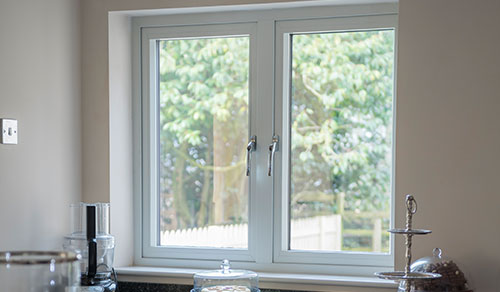In recent years, the demand for energy-efficient home solutions has surged, with homeowners and builders alike seeking innovative ways to reduce energy consumption and improve comfort. Among the various advancements in home insulation, triple glazing has emerged as a frontrunner, offering a multitude of benefits that go beyond traditional double glazing. This article explores the advantages of triple glazing, its impact on energy efficiency, and its growing popularity in residential construction.
Triple glazing, as the name suggests, consists of three panes of glass separated by two insulating spaces filled with argon or krypton gas. This design significantly enhances thermal performance compared to single or double-glazed windows. The primary benefit of triple glazing is its superior insulation properties, which can lead to substantial reductions in heating and cooling costs. According to recent studies, homes equipped with triple glazing can achieve energy savings of up to 30% compared to those using standard double glazing.
One of the most compelling reasons for the increasing adoption of triple glazing is its ability to minimize heat loss. In colder climates, maintaining a comfortable indoor temperature during winter months can be a challenge. Triple-glazed windows create a barrier that prevents warm air from escaping, thereby reducing the need for constant heating. This not only lowers energy bills but also contributes to a smaller carbon footprint, making it an environmentally friendly choice.
In addition to thermal insulation, triple glazing also offers enhanced soundproofing capabilities. The extra pane of glass and additional airspace help to dampen external noise, making triple-glazed windows an excellent option for homes located in busy urban areas or near highways. Homeowners can enjoy a quieter living environment, which is particularly beneficial for those who work from home or have young children.
Another significant advantage of triple glazing is its ability to improve indoor comfort. The reduction in cold spots and drafts associated with traditional windows creates a more consistent temperature throughout the home. This is particularly important in rooms with large windows or those that receive direct sunlight. By eliminating temperature fluctuations, triple glazing enhances the overall comfort of living spaces, making them more enjoyable year-round.
While the benefits of triple glazing are clear, some homeowners may be deterred by the initial cost. Triple-glazed windows can be more expensive to install than their double-glazed counterparts. However, Clean Pro many experts argue that the long-term savings on energy bills and the increased comfort level justify the upfront investment. Furthermore, with the rising costs of energy, the return on investment for triple glazing can be realized within a few years, making it a financially sound choice for many homeowners.
The growing awareness of climate change and the need for sustainable living has also played a significant role in the popularity of triple glazing. As governments and organizations worldwide push for stricter energy efficiency standards, homeowners are increasingly looking for ways to comply with these regulations. Triple glazing not only meets but often exceeds these requirements, making it an attractive option for those looking to future-proof their homes.
In addition to residential applications, triple glazing is also gaining traction in commercial buildings. Architects and builders are recognizing the value of this technology in creating energy-efficient office spaces, schools, and hospitals. The use of triple glazing in commercial construction not only improves energy performance but also enhances the overall aesthetic appeal of buildings, allowing for larger windows and more natural light.
As the demand for triple glazing continues to rise, manufacturers are investing in research and development to improve the technology further. Innovations such as low-emissivity (Low-E) coatings and advanced frame materials are enhancing the performance of triple-glazed windows, making them even more efficient. These advancements are likely to make triple glazing more accessible and affordable for a broader range of consumers in the coming years.
Despite its many advantages, some critics argue that triple glazing may not be necessary in all climates. In regions with milder temperatures, the benefits of triple glazing may not be as pronounced, leading some to advocate for double glazing as a more cost-effective solution. However, proponents of triple glazing argue that the long-term benefits, including energy savings, comfort, and noise reduction, make it a worthwhile investment regardless of climate.

As homeowners become more educated about energy efficiency and sustainable living, the trend toward triple glazing is expected to continue. The increasing availability of financing options and government incentives for energy-efficient upgrades will likely further drive adoption. Additionally, as more people prioritize environmental considerations in their purchasing decisions, the demand for triple glazing will likely grow.
In conclusion, triple glazing represents a significant advancement in window technology, offering numerous benefits for homeowners and builders alike. With its superior insulation properties, enhanced soundproofing, and overall comfort improvements, triple glazing is quickly becoming a preferred choice in modern construction. While the initial investment may be higher than double glazing, the long-term energy savings and environmental benefits make it a compelling option for those looking to improve their homes. As the industry continues to evolve, triple glazing is poised to play a crucial role in the future of energy-efficient building practices, contributing to a more sustainable and comfortable living environment for generations to come.





